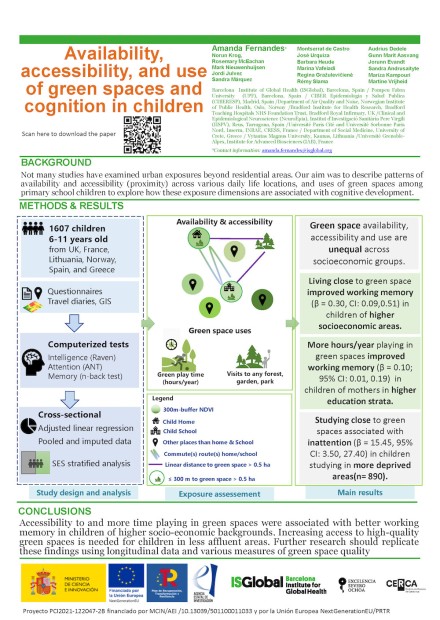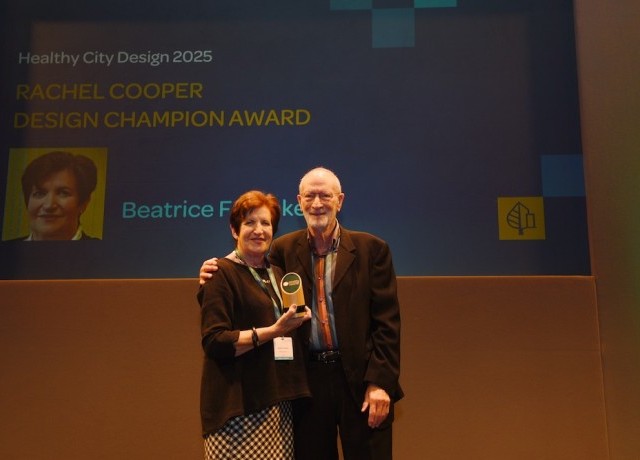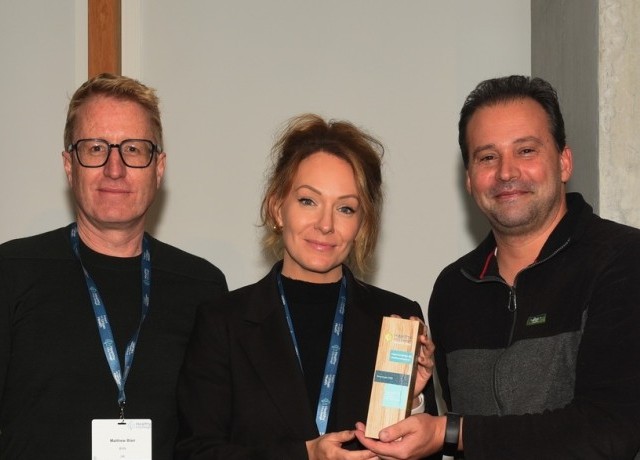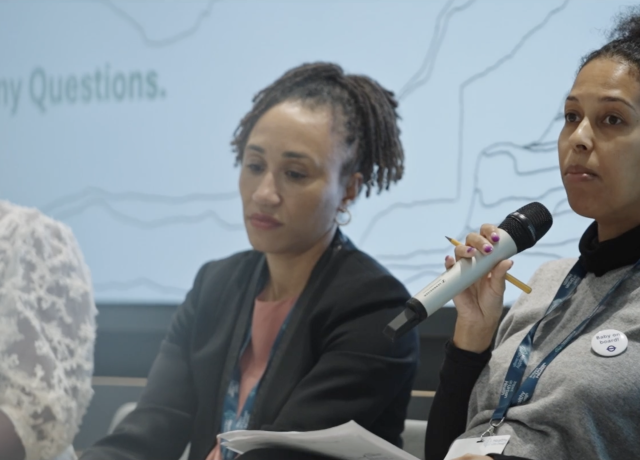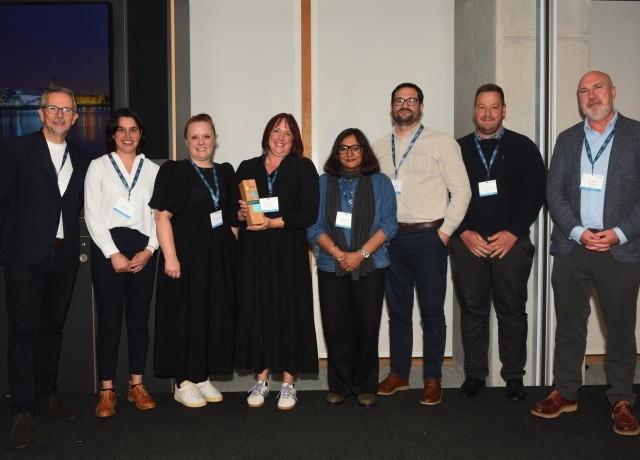Availability, accessibility, and use of green spaces and cognitive development in primary school children
Abstract
Green spaces may have benefits for children’s cognition. However, few studies have explored the exposure to green spaces beyond residential areas, and their availability, accessibility and use at the same time.
Objectives: To describe patterns of availability, accessibility, and use of green spaces among primary school children, and to explore how these exposure dimensions are associated with cognitive development.
Methods: Exposures to green space near home, school, commuting routes, and other daily activity locations were assessed for 1607 children aged 6-11 years from six birth cohorts across Europe, and included variables related to: availability (Normalised difference vegetation index (NDVI) buffers); accessibility (proximity to a major green space); and use (play time in green spaces and the number of visits to green spaces). Cognition, measured as fluid intelligence, inattention, and working memory, was assessed by computerised tests. We performed multiple linear regression analyses on pooled and imputed data adjusted for individual and area-level confounders.
Results: Availability, accessibility, and use of green spaces showed a social gradient that was unfavourable in more vulnerable socioeconomic groups. NDVI was associated with more playing time in green spaces, but proximity to a major green space was not. Associations between green space exposures and cognitive function outcomes were not statistically significant. Stratification by socioeconomic variables showed that living within 300m of a major green space, or more time playing in green spaces improved working memory only in children in less deprived residential areas and highly educated mothers.
Conclusion: Our study provides evidence that accessibility and use of green spaces are associated with better working memory in children of higher socio-economic background.
Learning objectives
- To describe patterns of availability, accessibility, and use of green spaces among primary school children
- To explore how these exposure dimensions are associated with cognitive development
- To provide evidence that accessibility and use of green spaces are associated with better working memory in children of higher socio-economic background
Presenters
Co-authors
Event news
Inclusive neighbourhood parks and resorts
20th November 2025
Community-led regeneration: Salford’s next century
19th November 2025
Actions to improve urban renewal and health equity
2nd September 2024

